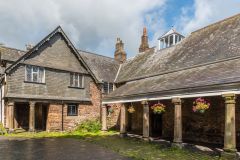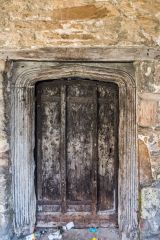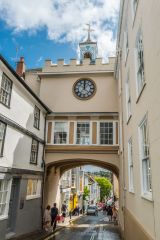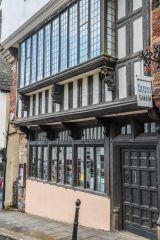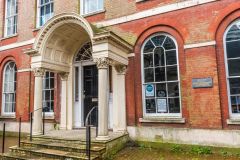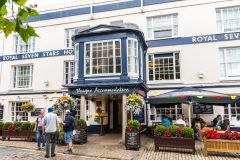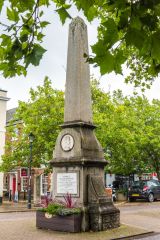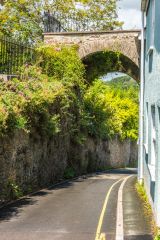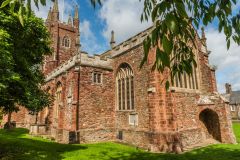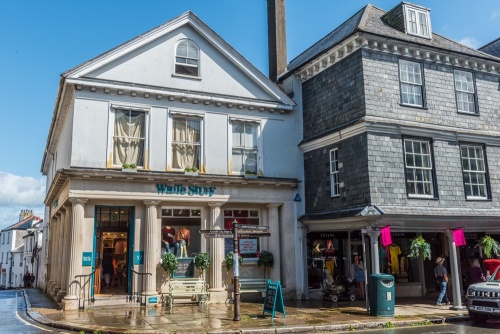
The town of Totnes is located at the highest navigable point of the River Dart, well inland from the sea. It has been a port since at least the medieval period.
Totnes Castle
Totnes Castle sits high on a hill above the town, commanding the approaches from three valleys. One of the best surviving examples of a Norman motte and bailey castle, Totnes was first erected in the 11th century as a wooden palisade on a high mound.
Extensive remodelling in the 13th and 14th centuries created a circular stone keep atop the mound, surrounded by a curtain wall. The keep has survived in excellent condition, though the outer defences have been left to crumble.
Just outside the castle is a stone arch over the roadway. This is all that remains of the medieval North Gate to the town.
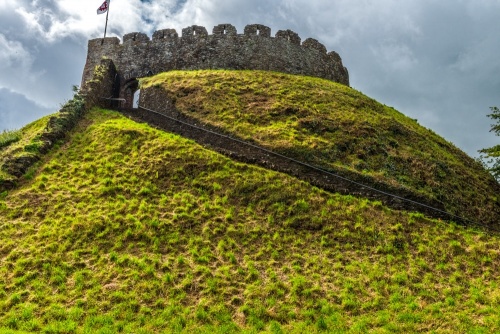
St Mary's Church
Set back from Fore Street is the attractive 15th-century church of St Mary, made of red sandstone. It is probably the third church on this site. St Mary's boasts a richly carved Tudor doorway and a magnificent stone rood screen and pulpit.
By the north edge of the churchyard is the house of Nicholas Bell, a wealthy Tudor merchant. Bell's widow married Thomas Bodley in 1586, and Bodley used her money to found the Bodleian Library in Oxford.
North of the church is the Butterwalk, a covered arcade dating to the 16th century and built to provide shelter for dairy stalls. The Totnes Fashion and Textiles Museum occupies Bogan House, the finest Tudor merchant's house in Totnes.
The Guildhall
Behind St Mary's church is the Tudor guildhall, open to the public and still used for town council meetings. The Guildhall was built in 1553 from the ruins of an 11th-century priory founded by Judhael, the Norman knight who built Totnes Castle. The Guildhall has served as a meeting place for civic events, a gaol, and a courthouse.
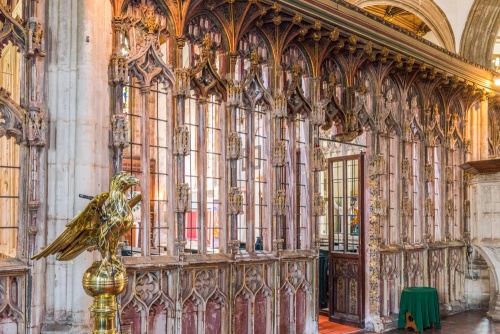
East Gate
Perhaps the most distinctive historical building in Totnes is this attractive archway spanning Fore Street. This was the eastern gateway to the medieval town of Totnes. It was badly damaged by fire in 1990 but was carefully restored to its original design.
The Brutus Stone
Set into the pavement at 51/53 Fore Street is a small granite boulder known as the Brutus Stone. The stone is said to mark the spot where Brutus of Troy, the mythical founder of Britain, first stepped ashore. According to legend Brutus escaped the fall of Troy and sailed off to the British Isles where he became the first Briton.
While legends of Trojan warriors seem farfetched to historians, it seems likely that the Brutus Stone did mark a traditional meeting place for the Saxon witan, the governing council of Totnes. During the Saxon and medieval periods the street level was much lower than it is now, so the stone was probably a local landmark and gathering place. It is still the focus for civic ceremonies.
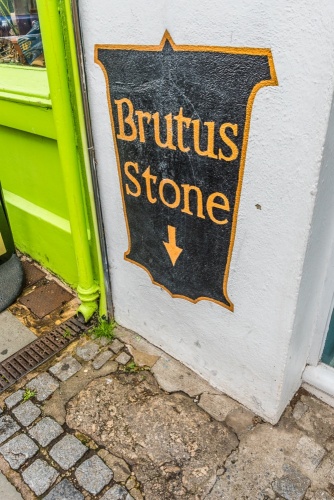
Elizabethan House
On the south side of Fore Street is the Totnes Museum, housed in a picturesque timber-framed building. The museum tells the rich history of Totnes and the surrounding region. The building was erected in 1575 for a cloth merchant named Walter Kellond and is an excellent example of a traditional timber-framed Elizabethan house. Behind the house is a freestanding kitchen and buttery linked to the house by a gallery.
Royal Seven Stars Hotel
At the bottom of Fore Street stands the Royal Seven Stars Hotel, a historic 17th-century courtyard inn possibly built by George Rooke, Mayor of Totnes in 1685/86. Author Daniel Defoe stayed at the hotel during his travels in the West Country. The hotel may stand on the site of a medieval inn.
On a traffic island opposite the Seven Stars is an obelisk acting as a memorial to Totnes native William John Wills, erected in 1864. Wills was the first white man to cross Australia in 1861. He died on the return leg of his journey.
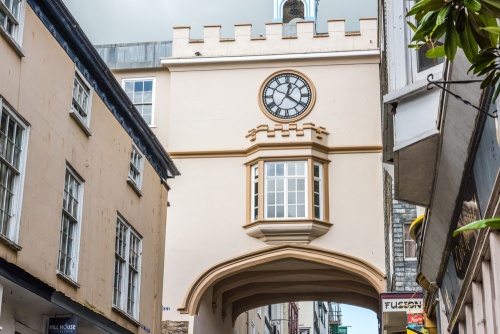
Across from the Wills memorial is Totnes Bridge, built in 1828 by Charles Fowler to replace an earlier bridge. You can still see the foundations of the earlier bridge at low tide. A few steps north of the bridge is Town Mill, a restored Victorian mill housing a collection of archival photos depicting life in Totnes during the 19th century.
Our family has visited Totnes on several occasions and always enjoy returning. There are so many historic buildings packed within a relatively compact area of the town centre. Parking can be a challenge at times but there is a public car park off Coronation Road near the bridge and a small car park on North Street near the castle.
Related:
Totnes Town Council website
About Totnes
Address: Totnes,
Devon,
England
Attraction Type: Town
Location map
OS: SX799 604
Photo Credit: David Ross and Britain Express
HERITAGE
 We've 'tagged' this attraction information to help you find related historic attractions and learn more about major time periods mentioned.
We've 'tagged' this attraction information to help you find related historic attractions and learn more about major time periods mentioned.
Find other attractions tagged with:
castle (Architecture) -
NEARBY HISTORIC ATTRACTIONS
Heritage Rated from 1- 5 (low to exceptional) on historic interest
Totnes Castle - 0.1 miles (Castle) ![]()
Totnes, St Mary's Church - 0.1 miles (Historic Church) ![]()
Berry Pomeroy Castle - 2.9 miles (Castle) ![]()
Stoke Gabriel Church - 3.7 miles (Historic Church) ![]()
Torbryan, Holy Trinity Church - 4.2 miles (Historic Church) ![]()
Compton Castle - 5 miles (Historic House) ![]()
Kirkham House - 5.4 miles (Historic Building) ![]()
Buckfast Abbey - 5.6 miles (Abbey) ![]()
